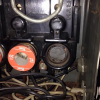Hello all
I have an electronics question for you
I've bought a PC that runs on 12v DC and want to run it in my caravan, on 12v
My lowest DC supply circuit is 12v 10 amps but the PC needs 12v 5 amps (60 watts)
How do I limit the supply to this PC - is it just a case of an inline 5 amp fuse off that supply, or do i need a device (like a DC-DC buck convertor) to restrict the supply to 12v 5 amp ?
Many thanks & kind regards, Tony
I have an electronics question for you
I've bought a PC that runs on 12v DC and want to run it in my caravan, on 12v
My lowest DC supply circuit is 12v 10 amps but the PC needs 12v 5 amps (60 watts)
How do I limit the supply to this PC - is it just a case of an inline 5 amp fuse off that supply, or do i need a device (like a DC-DC buck convertor) to restrict the supply to 12v 5 amp ?
Many thanks & kind regards, Tony








